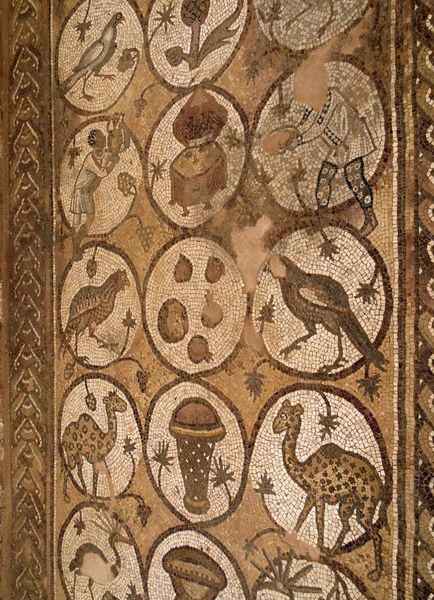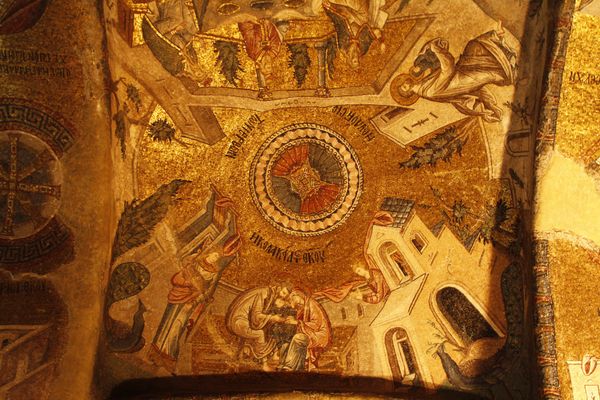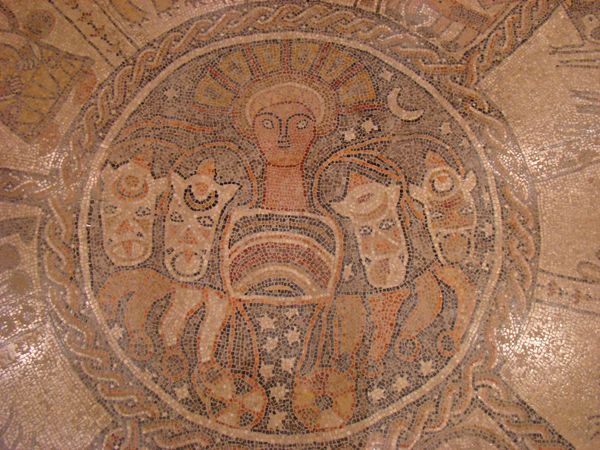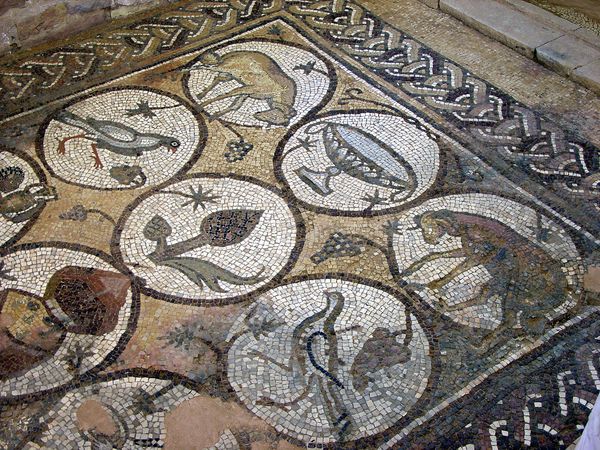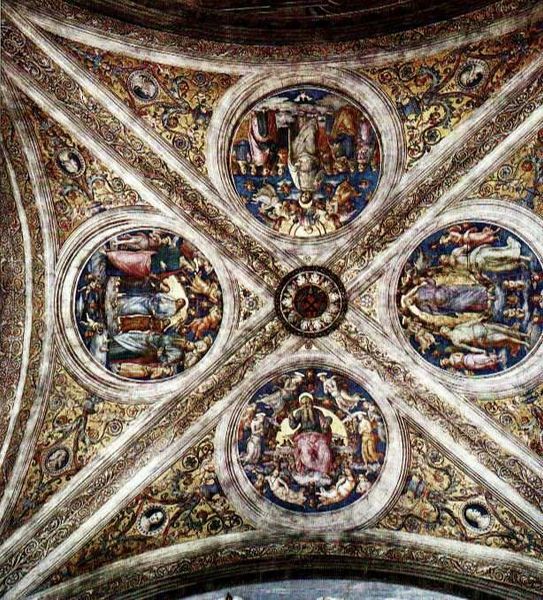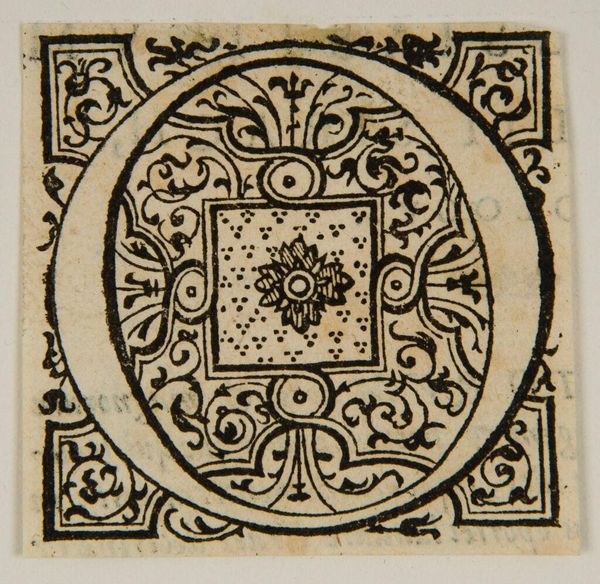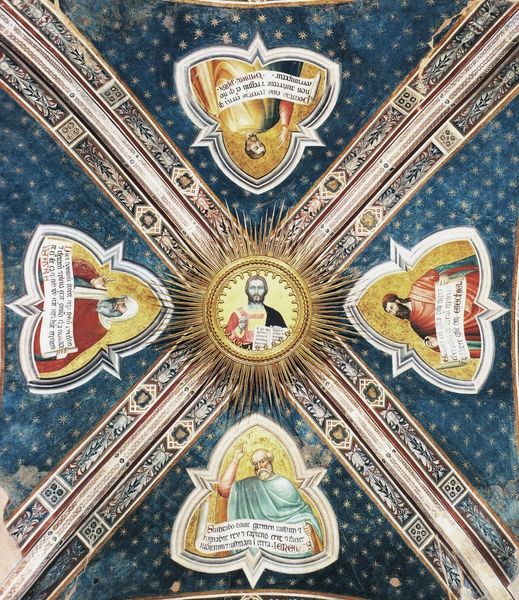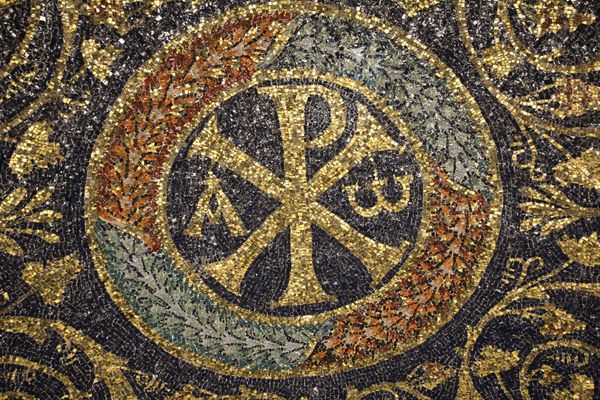
6th Century Ad Mosaic in the Beth Alpha Synagogue. 527
0:00
0:00
byzantinemosaics
Beth Alpha synagogue, Beit She'an, Israel
mosaic
#
mosaic
#
byzantine-art
#
geometric
#
ancient-mediterranean
Copyright: Public domain
Curator: What strikes me immediately is the rigorous geometry offset by a certain folk-art naiveté. The patterns—the frames—all feel incredibly deliberate and then populated by something so unstudied. Editor: That’s a fascinating contrast. We’re looking at a section of the 6th-century AD mosaic floor discovered at the Beth Alpha synagogue in Israel. Note how packed this mosaic truly is: it displays the sun god Helios in his chariot, surrounded by the twelve signs of the zodiac. Beneath this, we find the Akedah, or the Binding of Isaac. Curator: That circle—the zodiac—it disrupts the rectangular frame and gives the work a central dynamism, drawing the eye. Editor: Yes, that is common with byzantine-art from that time period, Helios, the Sun God represented the Greek influence; but it's interesting, in this very sacred setting, how the artists synthesized different cultural visual lexicons. Curator: Precisely. And beneath that circular element, there's this sharp orthogonal band separating the Sacrifice from what is almost architectural. It’s highly structured. Editor: Think of the symbolic weight here—the continuity between a Hellenistic sun god, the zodiac's temporal cycle, and the foundational narrative of the Jewish faith with Abraham’s willingness to sacrifice Isaac. These are deeply rooted motifs—the endurance of cultural memory expressed in visual form. Curator: There's an undeniable grounding in classical artistic styles while simultaneously, one can’t help but recognize something of the handmade; perhaps the Byzantine is that handmade form from Roman models? Look closely at the limited color palette. The emphasis seems less on chromatic nuance and more on the interplay of form and figure. Editor: And, if we dig into this work, the imagery is of Abraham on one side and the animal being readied on the other, then Abraham relenting to sacrifice Issac and it transforms into another story of culture being blended. We understand that it's Abraham sacrificing a lamb for his son—cultural memory, adapted. Curator: Yes. A testament, finally, to how different systems, visual and historical, manage to exist side by side in the space of art. Editor: A powerful testament indeed. It all seems carefully placed together—yet feels almost organic and free in its creation.
Comments
No comments
Be the first to comment and join the conversation on the ultimate creative platform.

